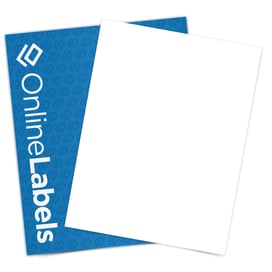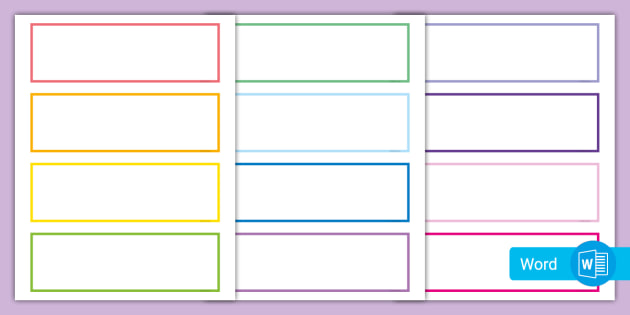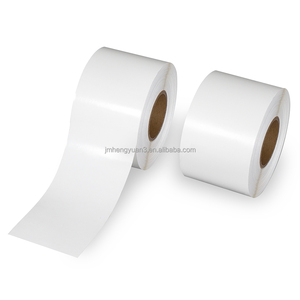Comprehending Just How Blank Labels Work to Improve Your Labeling Experience
Recognizing the auto mechanics of blank labels is essential for maximizing your labeling practices across different contexts. These versatile devices use substantial benefits, such as personalization and versatility, making them a suitable selection for both expert setups and personal use. From supply monitoring to home company, the implications of their strategic application can cause boosted effectiveness. However, to completely comprehend exactly how these labels can transform your procedures, one need to think about the different kinds available and the myriad methods they can be tailored to fit particular requirements.

Benefits of Making Use Of Blank Labels
Blank labels supply a versatile remedy for different labeling needs, making them very useful in both personal and specialist setups. Their adaptability allows individuals to develop tailored labels customized to particular requirements, boosting business effectiveness. Whether utilized in home offices, retail atmospheres, or industrial applications, blank labels help with the identification and classification of products, papers, and personal products.
One significant benefit of blank labels is their cost-effectiveness. By allowing users to publish only the labels they need, waste is reduced, and inventory monitoring ends up being extra workable. Furthermore, blank labels work with various printing approaches, including inkjet and laser printers, making them accessible for different individuals.

In addition, making use of blank labels simplifies the procedure of updating information, as users can quickly print new labels to replace obsolete ones, guaranteeing that all items and documents are properly labeled. In general, blank labels supply a practical and effective labeling solution for varied applications.
Kinds Of Blank Labels Available
What choices are readily available when it comes to blank labels? Blank labels come in a selection of types, each suited for different applications and choices.
Another prominent alternative is synthetic labels, commonly made from materials like polyester or plastic. These labels are known for their sturdiness and resistance to water, chemicals, and tearing, making them appropriate for rough environments. They are commonly made use of in industrial settings or for labeling items that might be subjected to dampness.
In addition, there are thermal transfer labels, which need a printer that uses heat to transfer ink onto the tag surface area. These labels are favored for their top quality print and durability.
Lastly, specialized labels cater to certain needs, such as removable labels for short-term usage or high-temperature labels for extreme conditions. Comprehending these options enables customers to select the most appropriate blank label for their one-of-a-kind labeling requirements.
Modification Options for Labels
A large variety of modification options is available for labels, permitting users to customize them to particular requirements and branding demands. Users can select from numerous Resources dimensions, shapes, and products to guarantee that the labels successfully fit their designated function. Typical materials include paper, polyester, and plastic, each using various degrees of sturdiness and aesthetic appeal.
Color options play an important function in customization, making it possible for brand names to maintain uniformity with their company identification. Individuals can pick from a spectrum of shades this page or also opt for custom printing to match details branding elements. In addition, labels can be published with distinct layouts, logos, and message, improving brand name acknowledgment and visual effect.
An additional vital aspect is the choice of adhesive. Labels can be made with permanent, detachable, or repositionable adhesives, depending on the application demands. This versatility permits reliable labeling solutions across various atmospheres, from retail to commercial setups.

Tips for Effective Labeling
Effective labeling exceeds personalization; it additionally includes calculated factors to consider that boost performance and interaction. To attain reliable labeling, start by clearly specifying the objective of each tag. Take into consideration the details that needs to be communicated and guarantee it exists in a straightforward fashion. Utilizing concise language and avoiding jargon can substantially boost comprehension.
Following, prioritize presence by picking proper shades and typefaces. High comparison in between text and background enhances readability, while larger fonts promote fast recognition. In addition, ensure that labels are placed in a consistent and sensible manner, making it less complicated for users to find and analyze details.
Think about the toughness of labels as well. Pick products matched for the specific environment where the labels will certainly be used, whether it be inside or outdoors. Water resistant or tear-resistant alternatives might be required depending on the context.
Lastly, frequently evaluation and update your labels to show any type of adjustments in information or use. click this link This proactive approach not just maintains quality yet additionally stays clear of confusion with time. By following these ideas, you can maximize the effectiveness of your labeling efforts, ensuring they offer their designated purpose effectively.
Applications of Blank Labels
Blank labels use various applications across various industries, making them an invaluable device for organization and communication. These functional labels are generally utilized in warehouses for stock monitoring, allowing services to conveniently recognize and track items. By applying blank labels to storage space containers, shelves, or pallets, companies can improve their operations and reduce the possibility of mistakes.
In the healthcare market, blank labels play a critical duty in labeling medications and clinical supplies, ensuring correct recognition and use. Personalized labels can include necessary details such as dose, expiration dates, and client information, boosting safety and compliance.
In retail, blank labels aid in prices items, supplying promos, or classifying shelf locations, which inevitably boosts the customer experience. They enable fast updates to pricing or item details without the requirement for pre-printed labels.
Additionally, blank labels are beneficial for individual use, such as arranging office, crafting, or classifying food containers. Their versatility permits individuals to develop tailored options that satisfy particular demands. Generally, the applications of blank labels are considerable, highlighting their significance in fostering efficiency and clearness in numerous setups.
Conclusion
In conclusion, blank labels present a functional and effective remedy for numerous identifying requirements. Eventually, the combination of blank labels into operational processes adds to enhanced efficiency, making them a very useful resource for both personal and specialist usage.